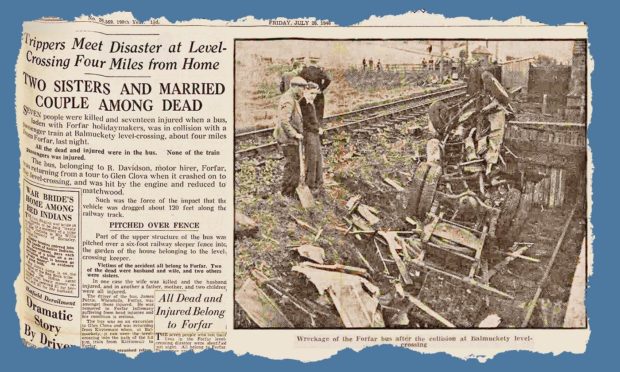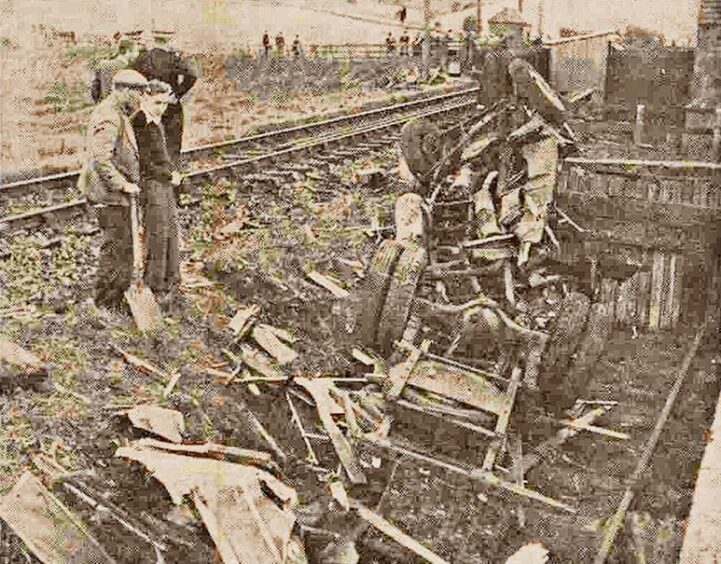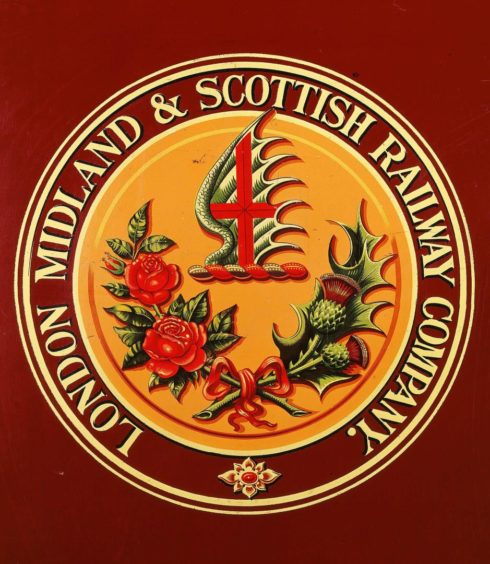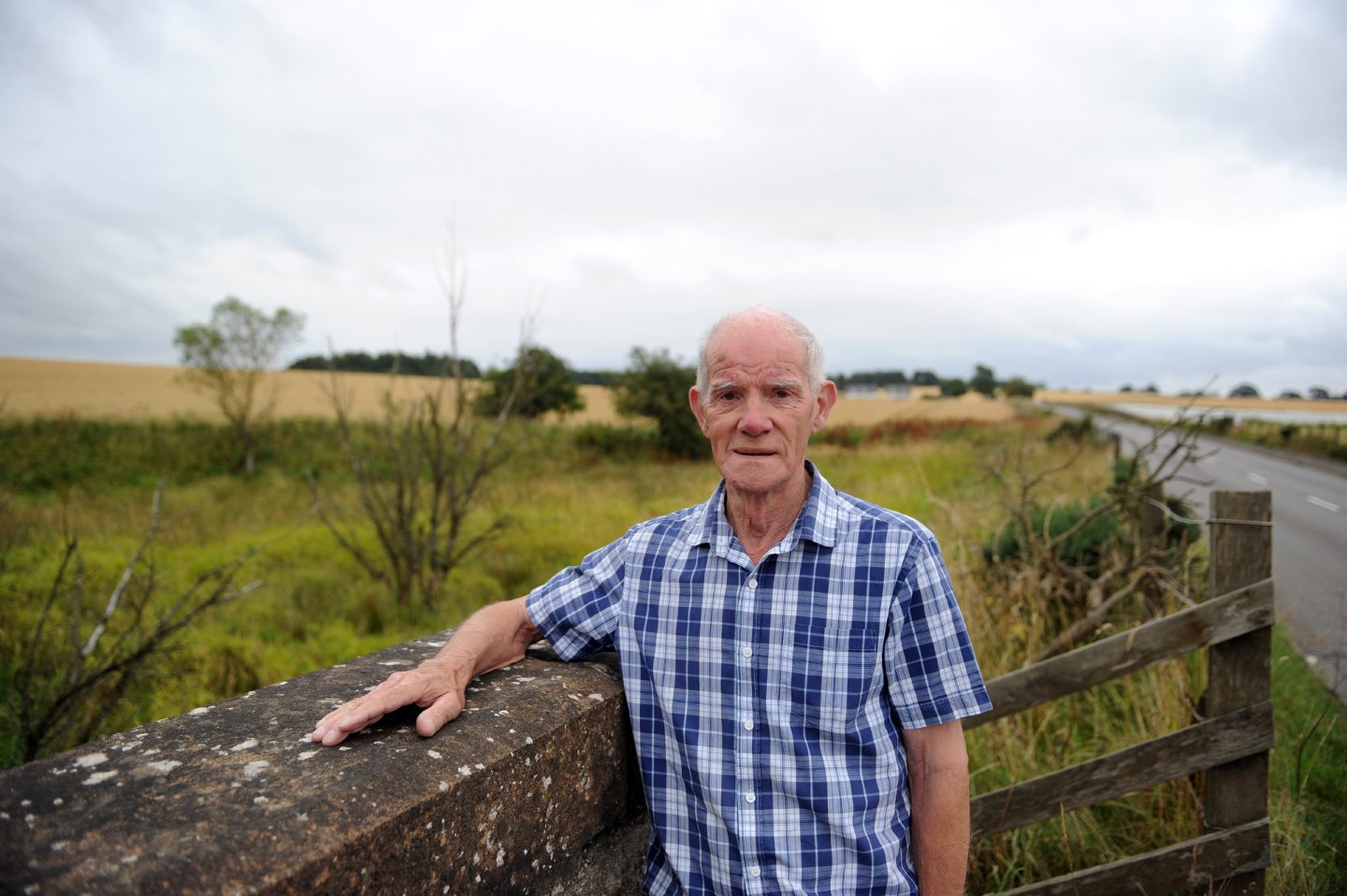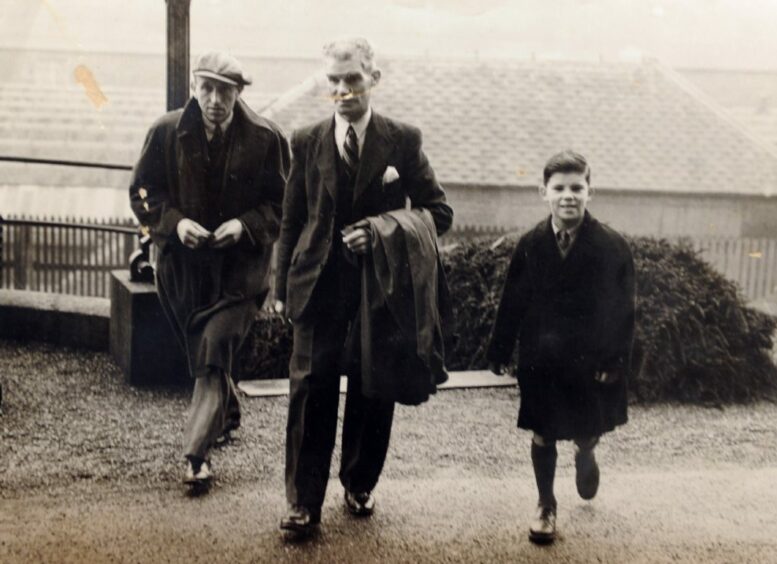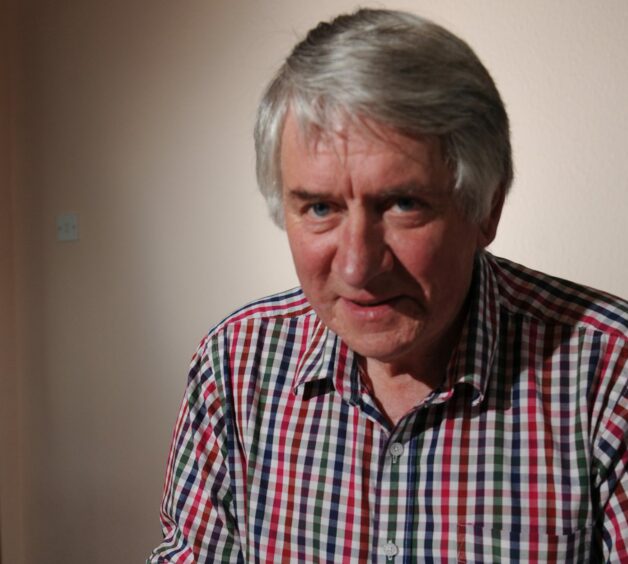“Hurry up for God’s sake and send help, especially nurses.”
That was the start of a frantic SOS call made by guard John Small following the worst disaster to happen in the Kirriemuir area.
On July 25 1946 a bus carrying day trippers careered out of control on to a level crossing, where it was struck by a train passing at the exact same moment.
They were just four miles from home.
Ten people died and 14 people were injured at Balmuckety junction.
No-one on the train was hurt.
The dead were all from Forfar.
How did the accident happen?
The event leading to the tragedy was an afternoon bus tour to Glen Clova.
Two buses were put on which were owned by a Forfar garage business and its occupants were mostly couples and families enjoying the annual break.
After tea in the glen, the first bus made the journey home uneventfully.
The second, which left later, carrying 24 passengers, was being driven by James Petrie, who approached the bend at the top of the hill at 20mph.
As it approached the manned, signalled and gated level crossing, the driver discovered there was something far wrong when he tried to brake.
The bus continued, gathering speed until it was careering towards the level crossing gate at the branch line between Kirriemuir and Forfar.
Petrie jammed the brake pedal to the floor and yanked up the handbrake lever, but to no avail.
Realising the predicament he and his passengers were in, he slammed the vehicle into reverse gear.
By now, however, the bus was completely out of control and it crashed through the first gate of the crossing, the body of the vehicle sitting across the rails.
As fate would have it, a train was approaching at exactly the same moment.
The driver had seen the bus over the fields and expected it to stop.
However, 30 yards from the crossing he realised this was not the case and reacted by swiftly applying the brakes.
It was travelling bunker first, and the bunker smashed in to the back of the bus, despite the valiant efforts of the driver to put the train into reverse.
The chassis of the bus, shunted 40 yards down the track, ended up on the east side of the line and the roof and part of the body were thrown over a six foot fence into the garden of level crossing keeper Andrew Pullar who was struck by a piece of wood.
The rest of the vehicle was bent and broken and scattered around the crash site.
Dead and injured were strewn along both sides of the railway line.
Temporary mortuary in Forfar
Train guard John Small telephoned the stationmaster’s clerk at Forfar and sent out a request to send all available ambulances, doctors and nurses.
Dr Rattray from Kirriemuir was on the scene within minutes and he attended to the injured while train passengers helped administer first aid.
He was joined by Dr Campbell from Kirriemuir and the local papers noted they “laboured heroically in the arduous job of tending the injured”.
Senior railway and police officials were soon on the spot to render assistance and divert road traffic.
Seven people were killed instantly in the collision and 17 more were injured.
Ambulances from all over the county were drafted in and the injured were taken to Forfar Infirmary.
The dead were transferred to a temporary mortuary within the mart of Scott & Graham Ltd in Forfar.
The more seriously injured were removed to Stracathro Hospital near Brechin.
Three of them died later, taking the death toll to 10.
Most of the dead were well known in the community including Nell McGregor whose tobacconist shop in East High Street supplied two generations of Forfarians.
The bus driver suffered serious injuries but recovered.
The bus broke up on impact
Sidney Logan from Forfar was just 10 when the accident happened.
His father David owed his life to the fact he exchanged seats with another passenger at Glen Clova in order that she might get a better view from the window.
“The bus driver was trying to brake but nothing happened and we burst through the wooden gate and got stuck across the track,” he said.
“At that point people started to realise the train wasn’t going to stop in time.
“The front window popped out on impact and I clambered out onto the embankment.
“I turned back and saw the train pushing the bus down the rails.
“The bus was disintegrating into pieces as it went.”
Sidney found his mother and sister lying down on a grassy slope and went to look for his father who was giving brandy to the injured and dying.
“What happened affected me for years after,” he said.
“I would always get a queer feeling when I passed the site.”
The morning after the accident, officials from the London, Midland and Scottish Railway Company, the operators of the branch, inspected the site and held a private inquiry at Forfar station.
Private inquiry at Forfar station
On August 3 the official inquiry started and, in December, Ministry of Transport inspecting officer Colonel Trench issued his findings.
Investigations subsequent to the crash turned up serious faults on the coach and Trench found its maintenance had been neglected.
It was a tragic accident that could have been prevented had the vehicle been in a better mechanical condition.
The timing was bad luck.
Sandy Brown from Dundee was on holiday when the crash happened in 1946.
He said: “We were out playing with some of the local children when a boy came running towards us shouting that a train had hit a bus on the level crossing.
“We all ran there at once and it took us less than 10 minutes.
“The bus was further down the track and it was smashed to bits as it was mostly made out of wood.
“There were bodies at the side of the track and they were putting bonnets over the faces of the dead.
“I can remember there was a lot of blood and my brother picked up a small lamp which was off the mud guard of the bus.
“He kept it for years.”
Still haunted by the crash
David Orr, whose house overlooks the site of the crash, said the bus had been reduced practically to driftwood.
He said: “Train passengers and motorists gave assistance, some transporting the less seriously injured in their cars to Forfar Infirmary.
“As word spread round the town, people came down in their cars to see what they could do.
“Some handed over their precious cans of rationed petrol to assist this task.
“The dead, all from Forfar, included a married couple and two spinster sisters, and the injured included children, two seven-year-olds and one ten-year-old.
“A young couple who were injured had been married only three weeks before, and were on the outing with the bride’s parents, who were the couple who died.
“The extent of this tragedy was such that it made headline news even in England.
“Many local people were affected by the tragedy and remember it still.”
